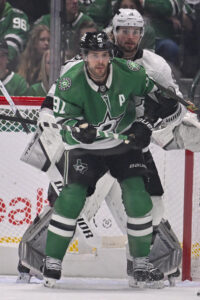The St. Louis Blues have recalled a stopgap as the team navigates multiple injuries to their forward core. According to a team announcement, the Blues have recalled veteran depth forward Matt Luff from the AHL’s Springfield Thunderbirds.
It’s been several years since Luff last played in the NHL. Dating back to the 2022-23 season, Luff played 19 games for the Detroit Red Wings, scoring two goals and four points with a -4 rating, while averaging less than 10 minutes of ice time per game.
He actually spent one additional year within the Red Wings organization, although he played exclusively for their AHL affiliate in Grand Rapids. Before that season with Detroit, and a one-year stint with the Nashville Predators, Luff had spent three years as a depth forward for the Los Angeles Kings, registering 10 goals and 17 points in 64 games.
Without a pathway back to the NHL, Luff settled on a PTO with the AHL’s Charlotte Checkers last season before ultimately signing a one-year AHL deal with Springfield. It turned out beneficial for both sides as Luff enjoyed the best season of his professional career, tallying 18 goals and 45 points in 50 games. That extra offense was enough to earn the Thunderbirds a spot in the 2025 Calder Cup playoffs, though they were eliminated in the First Round by the Providence Bruins.
Regardless, there’s no guarantee Luff will suit up in another NHL contest during this recall. The Blues are reportedly leaning toward giving Aleksanteri Kaskimaki, who was recalled yesterday, his NHL debut. Additionally, Pius Suter is expected to return to the lineup after missing St. Louis’ previous two games.
